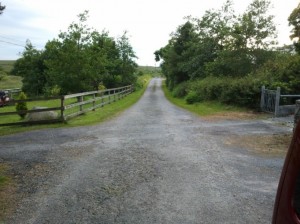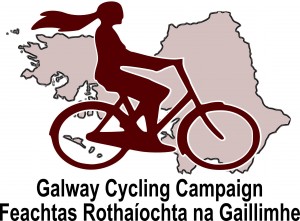Need for root and branch review of entire project
The Galway Cycling Campaign has welcomed the decision by the Minister for Transport, Mr. Paschal Donohoe TD, to suspend funding for the controversial Galway section of a proposed cross country cycleway. We think there should now be a root and branch review of the conduct of the project agencies which has caused consternation among landowners along the route. The NRA and Council Roads departments were clearly not suitable to deliver such a project and it should now be given to other agencies. The suspension of the project was needed since it was having a damaging effect on whole concept of cycle tourism and recreational cycling in rural areas. The behaviour of the NRA and County Council Roads departments threatened to do profound damage to the development of cycling tourism in Galway and nationally.
The Cycling Campaign have previously pointed out that the county councils and NRA had ignored standard methods for providing such routes without splitting farms. From the outside the impression was of a project intended to maximise the cost to the taxpayer and thereby maximise any disruption to local communities and for little useful purpose. The conduct of the agencies involved has raised the spectre of the worst days of the Celtic Tiger. The project was handled like some kind of “mini-motorway” scheme. Coloured lines were drawn on maps and compulsory purchase orders proposed for lands along these designated corridors. A completely new road was to be pushed through the countryside of East Galway with little or no attempt to make use of existing infrastructure already in public ownership. The argument might be made that this was what was specified in the term of reference for the project. However, these terms of reference were probably drawn up in consultation with the agencies involved. Either way they should not have been accepted as the basis for the project.

These agencies also seemed to simply ignore successful models for cycling tourism that were already working in County Galway. Cycling is central to the tourism product on the Aran Islands. On Inis Mór, cycling is a popular way for tourists to explore the island. Visitors hire bikes near the quay when they get off the ferry and use minor country roads shared with local motor traffic. The key point is that these roads are used by low volumes of motor vehicles on local journeys. In our view, it would be bizarre to suggest that similar conditions cannot be created elsewhere in the county.
There are also successful models for creating rural recreational routes already operating on the ground. Up and down the country, rural recreation officers and county heritage officers have been working with local communities, for minimal cost, to develop walking routes using local country lanes and boreens. These programs attract wide community buy-in and the resulting routes are “adopted” by local communities. Instead of building on this successful model, the NRA and Council Roads engineers took an approach that maximised cost and alienated local communities. The key point about cycle routes is that they are first and foremost to serve the local community. These local segments then link up to provide larger networks.
Along with the conduct of the scheme, the route choice itself had raised eyebrows. We have been discussing and thinking about the Dublin-Galway route for nearly two decades. The Royal Canal never suggested itself as an obvious choice. The obvious choice was always to follow the Grand Canal to Shannon Harbour and tie in with Clonmacnoise and the Beara Breifne Cycle route which starts in West Cork and ends in Fermanagh. The Royal Canal to Mullingar suggests itself as a route for getting to Mayo rather than Galway. Some commentators have now been calling for the extension of the Royal Canal route towards Mayo.


Leave a Reply